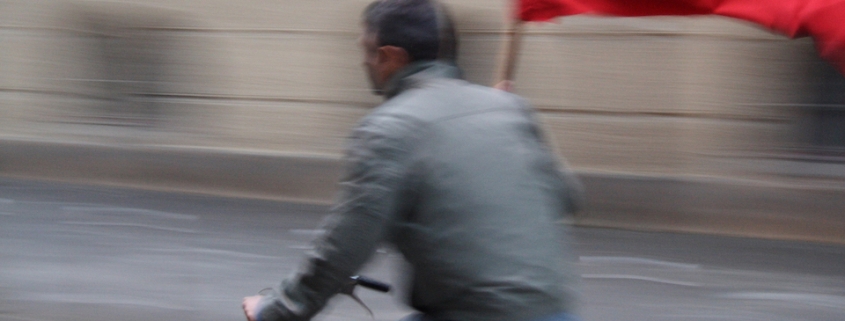A GRAMMAR OF RESISTANCE
Igor Grubić
Curator: Cristian Nae
STATEMENT
The solo exhibition of the Croatian artist Igor Grubić, curated by Cristian Nae at Borderline Art Space in Iași, proposes a selection of works made between 1998-2015 having as a common theme the culture of protest and civic resistance. The work of Igor Grubić is characterized by an explicit social and political commitment. For almost two decades, he has explored the erosion of models and of social values in the post-communist Crotian society which was in a process of capitalist transformation similar to the one that took place in Romania, and also the social discrepancies and fractures that appeared in the space of former Yugoslavia. The artist started his artistic work as an activist, having interventions in the public space and performative actions meant to destabilize the symbols and the rituals of the newly installed social order and to keep the seeds of resistance alive, together with the possibility to contaminate in this way the entire social body.
A selection of photographs from the series 366 Liberation Rituals are exhibited at Borderline Art Space. The artist has documented protests and anonymous micro-interventions in the public space through which he generated ephemeral forms of commemorating the socialist values which have been forgotten or denaturated. These interventions indirectly question the succession of cultural and social rebellions from Europe in the year 1968, implicitly examining their (in)actuality. Could these photographic images go beyond their role of recording and confessing the performative commitment of the artist? Could they be translated and understood in another cultural space and another social environment which is close, yet far away from the one where they were made? This exhibition bets on opening the potentiality for these images to become fragile and poetic models of intervention and civic engagement for the viewer from today’s Romania, a viewer who has to face the intensification of nationalist mythologies, of what is autochtonous, of ecological indifference, of xenophobia and intolerance towards LGBTQ communities, which are all masked forms of well-tempered fascism. In this context, the micropolitical actions of Igor Grubić become potential ideas on how to think about another social order, lessons of civic engagement which lack emphasis and didacticism. The exhibited examples intend to serve as a potential microguide of interventionist practices, specific to DYO culture, which can be copied in daily life. They are indirectly entering into dialogue with the fragile culture of protest coagulated in the past years in Romania.
Together with these works, one of the iconic films of the artist, East Side Story (2006-2008), is presented. The two channel video piece recalls the violence of the groups of NeoNazi supporters against the participants at two gay pride manifestations that took place in Belgrade in 2001 and in Zagreb in 2002, by juxtaposing documentary images and choreographic re-staging. Choreography, understood by Jacques Rancière from the perspective of Plato’s thinking as one of the artistic forms which is more appropriate for the representation of the community, sublimates and symbolically re-codes pure violence. In Grubić’s work, it is a disconcerting manner of reminding people about the deepening social schisms and the devastating effects of intolerance.

